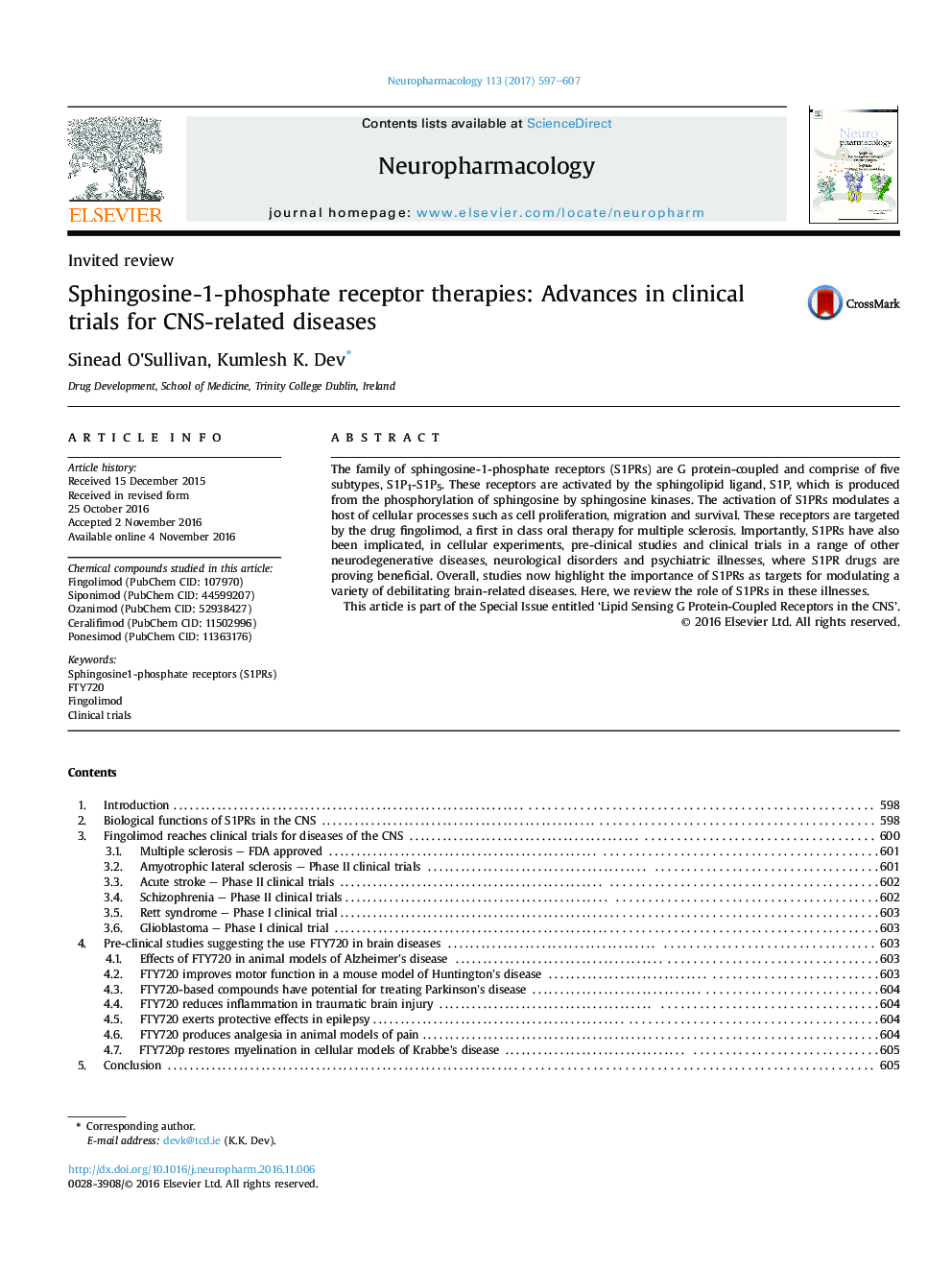| Article ID | Journal | Published Year | Pages | File Type |
|---|---|---|---|---|
| 5549035 | Neuropharmacology | 2017 | 11 Pages |
â¢An overview of FTY720p and sphingosine 1 phosphate receptor drugs in disease.â¢The use of FTY720p in clinical trials: a look beyond multiple sclerosis.â¢What lies for the future of S1PR drugs: hints from preclinical studies.
The family of sphingosine-1-phosphate receptors (S1PRs) are G protein-coupled and comprise of five subtypes, S1P1-S1P5. These receptors are activated by the sphingolipid ligand, S1P, which is produced from the phosphorylation of sphingosine by sphingosine kinases. The activation of S1PRs modulates a host of cellular processes such as cell proliferation, migration and survival. These receptors are targeted by the drug fingolimod, a first in class oral therapy for multiple sclerosis. Importantly, S1PRs have also been implicated, in cellular experiments, pre-clinical studies and clinical trials in a range of other neurodegenerative diseases, neurological disorders and psychiatric illnesses, where S1PR drugs are proving beneficial. Overall, studies now highlight the importance of S1PRs as targets for modulating a variety of debilitating brain-related diseases. Here, we review the role of S1PRs in these illnesses.This article is part of the Special Issue entitled 'Lipid Sensing G Protein-Coupled Receptors in the CNS'.
Graphical abstractA summary of the use of FTY720 in pre-clinical and fingolimod in clinical studies.Download high-res image (223KB)Download full-size image
